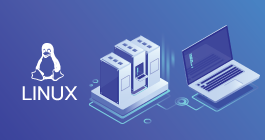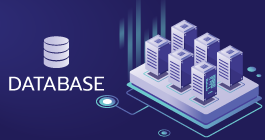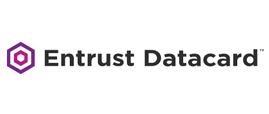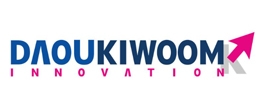-
Welcome to My Website
This is a text box. Write your own content here. This is an excellent place for you to add a paragraph.
Netway Support Center
เราพร้อมบริการคุณ ตลอด 24 ชั่วโมง
Payment & Invoices
Products Knowledge










Zendesk




Other Cloud Products
Technical Knowledge
Website/Install Application & FTP
Linux Technical Knowledge
Windows Technical Knowledge
Database
Blog list (8)
วิธีการสร้าง MRM Retention Policy (In-Place Archive policy)
About MRM Retention Policyโดยปกติแล้ว หากมีการเปิดใช้งาน In-Place Archive สำหรับ Mailbox ใดบนระบบ Microsoft 365 ระบบจะมี MRM Retention Policy กำหนดอยู่ โดยค่าเริ่มต้นของ Default MRM retention policy กำหนดไว้ว่าระบบจะย้ายข้อมูล Email จาก Mailbox storage ไปยัง In-Place Archive storage เฉพาะ Email ที่มีอายุเกิน 2 ปีขึ้นไปดังนั้น หาก Mailbox ใดที่ต้องการเพิ่มพื้นที่การเก็บข้อมูล โดยเปิด Feature In-Place Archive storage แต่ Email ทั้งหมดที่ใช้งานอยู่นั้นเก่าที่สุดมีอายุไม่ถึง 2 ปีระบบก็จะไม่ย้ายข้อมูลให้อัตโนมัติ จึงทำให้พื้นที่ของ Mailbox ไม่ลดลง ถึงจะเปิด Feature ดังกล่าวไปแล้วนั่นเอง ข้อควรทราบก่อนดำเนินการ1. ผู้ที่เข้าดำเนินการ จะต้องมีสิทธิ์ Exchange Admin Center และ Compliance Management หรือ Organization Management หรือ Records Management หรือสิทธิ์ที่ครอบคลุมที่สุด คือ Global Administrator2. การกระทำดังกล่าวจะส่งผลต่อข้อมูลของผู้ใช้งาน ดังนั้น ควรทบทวนกฏที่สร้างอย่างถี่ถ้วนก่อนดำเนินการบันทึก3. วิธีการจะแยกเป็น 2 Part โดยจะเป็นการสร้าง MRM Retention Tags ก่อน จากนั้นจึงสร้าง MRM Retention Policy วิธีการสร้าง Retention Tags1. เข้าไปยัง Microsoft Purview โดยไปยัง Admin Center > Compliance > Data Lifecycle Management > Exchange (Legacy) > MRM Retention tags2. เลือก + New tag เพื่อสร้าง Retention Tags ขึ้นมา (ตัวอย่างจะกำหนดระยะเวลาที่ 1 ปี) โดยกำหนดข้อมูล ดังนี้ - กำหนดชื่อ Retention Tag โดยอาจจะเป็นชื่อเดียวกับระบบเดิม เช่น "Default 1 year move to archive" - ในหน้า Application Method ให้เลือก "Automatically to entire mailbox (default)" - กำหนด Retention Period ตามวันที่ต้องการ ตัวอย่าง คือ 1 ปี กำหนดเป็น 365 วัน - กำหนด Retention Action เป็น "Move item to archive"เมื่อตรวจสอบ Policy ได้ถูกต้องแล้ว กด Submit เพื่อสร้าง Retention Tag วิธีการสร้าง Retention Policy1. เข้าไปยัง Microsoft Purview โดยไปยัง Admin Center > Compliance > Data Lifecycle Management > Exchange (Legacy) > MRM Retention policy2. เลือก + New policy เพื่อสร้าง Retention policy ขึ้นมาใหม่ ดังนี้ - กำหนดชื่อ Retention policy โดยอาจจะเป็นชื่อเดียวกับ Retention Tag เพื่อให้เข้าใจง่ายในขั้นตอนการเลือก จากนั้นเลือก + Add tag โดยเลือกทุกๆ Tag ที่ไม่ใช่ Default และเลือก Tag Default เฉพาะตามที่ต้องการเพียงแค่ 1 Tag เท่านั้น - ตรวจทาน Retention Tag ต่างๆ อีกครั้งหนึ่ง ให้ถูกต้องตามที่ต้องการ เช่น Default Tag มีแค่เพียง 1 Tag ใช่หรือไม่ วันที่ต้องการถูกต้องหรือไม่ Policy เป็น Archive ไม่ใช่ Delete ใช่หรือไม่เมื่อตรวจสอบ Policy ได้ถูกต้องแล้ว กด Submit เพื่อสร้าง Retention Policy วิธีการสร้างกำหนด Retention Policy ให้กับผู้ใช้งานที่ต้องการ1. เข้าไปยัง Exchange Admin Center > Recipients > Mailboxes2. เลือกผู้ใช้งานที่ต้องการ > ไปยัง Tab Mailbox3. ส่วนของ Mailbox policies เลือกจัดการ Manage mailbox policies4. จากนั้นเลือกส่วนของ Retention policy เป็น Policy ที่ต้องการจากนั้นกด Save5. การดำเนินการดังกล่าว จะใช้ระยะเวลาไม่เกิน 24 ชั่วโมง โดยข้อมูลจะย้ายจาก Mailbox ไปยัง In-Place Archive ให้อัตโนมัติ โดยที่ผู้ใช้งานไม่ต้องสร้าง Folder ใดๆ ทั้งสิ้นข้อมูลเพิ่มเติมCreate a Retention Policy in Exchange Online | Microsoft Learn----------------------------------------------------------------------------------------------------------------------------------------------------------------------------------------------------------------Netway Communication ให้บริการด้าน Cloud และ IT พื้นฐานสำหรับธุรกิจ เป็นตัวแทนแบรนด์ไอทีชั้นนำมากมาย ทั้ง Microsoft, Google, Digicert, ฯลฯ เรามีเจ้าหน้าที่พร้อมดูแลคุณ 24 ชม. ติดต่อเราเพื่อสอบถามผลิตภัณฑ์ ขอราคา หรือปรึกษาเรื่องไอที ได้เลยค่ะLine : @netway (มี @ ด้านหน้า) หรือ https://bit.ly/line-netwayFacebook : m.me/netway.offcialTel : 02-055-1095Email : support@netway.co.thWeb Chat : [[URL]]/
ซื้อ Microsoft 365 Copilot กับ Netway Communication ได้แล้ววันนี้
Microsoft 365 Copilot ผู้ช่วย AI ส่วนตัวของคุณ Microsoft 365 Copilot ผู้ช่วย AI ส่วนตัว ที่ช่วยให้คุณทำงานใน Microsoft 365 ได้เร็วขึ้น ฉลาดขึ้น และง่ายขึ้น การใช้ Microsoft 365 Copilot มีข้อดีหลายอย่างที่ช่วยให้การทำงานของคุณมีประสิทธิภาพมากขึ้น โดยเฉพาะสำหรับคนที่ใช้งาน Word, Excel, PowerPoint, Outlook, Teams และแอปฯ อื่น ๆ ในบริการ Microsoft 365 อยู่แล้ว นี่คือข้อดีหลัก ๆ ของ Copilot ประสบการณ์ใหม่ๆกับเครื่องมือที่ใช้งานง่ายและปลอดภัยในบริษัทจาก Microsoft รอคุณอยู่ เริ่มปฏิวัติการทำงานด้วย AI ให้ได้ผลงาน "ดีขึ้น! เร็วขึ้น! ง่ายขึ้น!" ก่อนใคร สนใจสั่งซื้อ อย่ารอช้า !! ทักไลน์ หาเราเลย Line ID: @netway, โทร: 02 055 1095 ได้ตลอด 24 ชม. เพื่อให้เราเข้าใจโจทย์ของคุณและให้คำปรึกษาคุณได้อย่างเต็มที่ คลิก อ่านรายละเอียดเพิ่มเติม
เปรียบเทียบ Microsoft Teams Enterprise กับ Microsoft Teams Essentials (ต.ค. 2024)
เปรียบเทียบ Microsoft Teams Enterprise กับ Microsoft Teams Essentials (ต.ค. 2024) Microsoft Teams Enterprise ต่างจาก Microsoft Teams Essentials อย่างไร นอกจากคำตอบง่ายๆ ที่ว่า Microsoft Teams Enterprise เหมาะสำหรับองค์กรขนาดใหญ่ และ Microsoft Teams Essentials เหมาะสำหรับ SME ที่มีพนักงานไม่เกิน 300 คนแล้ว เราได้รวมข้อมูลสร้างตารางเปรียบเทียบนี้ขึ้นมา เพื่อช่วยให้คุณเลือกว่า Microsoft Teams รุ่นไหนเหมาะกับการใช้งานของคุณ และคุ้มค่าที่สุดตามโจทย์ที่คุณต้องการ เปรียบเทียบ Microsoft Teams Enterprise กับ Microsoft Teams Essentials Microsoft Teams Enterprise Microsoft Teams Essentials 2,330.00 บาท ผู้ใช้/ปี ผู้ใช้/ปี ซื้อทันที การจัดการข้อมูลประจำตัว การเข้าถึง และผู้ใช้สำหรับพนักงานสูงสุด ไม่จำกัดจำนวนการสั่งซื้อ ต่อ 1 องค์กร 300 คน ต่อ 1 องค์กร ผู้เข้าร่วมสูงสุดกี่คนต่อการประชุม 1 ครั้ง 1,000 คน/ ประชุม 300 คน/ ประชุม สามารถจัด Live Event หรือ Townhall ได้หรือไม่ ❌ การประชุมกลุ่มแบบไม่จำกัด สูงสุด 30 ชั่วโมง สูงสุด 30 ชั่วโมง ขนาดที่เก็บข้อมูลบน Cloud 10 GB/ ผู้ใช้ 10 GB/ ผู้ใช้ การสนับสนุนทางโทรศัพท์และเว็บตลอดเวลา แชทได้ไม่จำกัดกับเพื่อนร่วมงานและลูกค้า การแชร์ไฟล์ งาน และการโพลล์ การเข้ารหัสลับข้อมูลสำหรับการประชุม การแชท การโทร และไฟล์ มี Microsoft 365 Copilot พร้อมใช้งานเป็น Add-on Microsoft 365 apps and services หมายเหตุ: อัพเดทข้อมูลล่าสุด 1 ต.ค. 2024 โดยอ้างอิงจากเว็บไซต์ Microsoft หากมีการเปลี่ยนแปลงให้ยึดถือตามข้อมูลหลักของ Microsoft เป็นสำคัญ หากคุณสนใจแอปโปรแกรมสำหรับผู้ใช้งานประชุมออนไลน์ แชท การโทร การแชร์ไฟล์ การสัมมนา เทรนนิ่ง โดยการประชุมออนไลน์นั้นรองรับผู้เข้าร่วมสูงสุด 300-1,000 คนต่อการประชุม มีที่เก็บข้อมูลบน Cloud โดยเฉพาะ สามารถติดต่อ Netway Communication ได้ตลอด 24 ชม. เพื่อสอบถามผลิตภัณฑ์ ขอราคา หรือปรึกษาเรื่องไอที Line : @netway (มี @ ด้านหน้า) หรือ https://bit.ly/line-netwayFacebook : m.me/netway.offcialTel : 02-055-1095Email : support@netway.co.thWeb Chat : [[URL]]/
October 2024 - Netway Combo ข่าวสารรายเดือน ต.ค. 2024
Netway Combo - October 2024 อัพเดตข่าวสาร ความรู้ เทคนิควิธีการใช้โปรแกรมและโปรโมชั่น จากเน็ตเวย์ฯ พิเศษสุด ซื้อ Microsoft 365 Copilot กับ Netway Communication วันนี้ ลดทันที 15% แบบไม่กั๊ก https://tinyurl.com/bddy8225 Hybrid Email คืออะไร https://tinyurl.com/5yrz4v9t เปรียบเทียบ Microsoft Teams Enterprise กับ Microsoft Teams Essentials (ต.ค. 2024) https://tinyurl.com/4kftcudx Microsoft Teams รองรับการสลับบัญชีองค์กร-ส่วนตัว ในแอปเดียวกันได้แล้ว https://tinyurl.com/4f2nrde2 ทำความรู้จักเครื่องมือที่มี AI จะได้ไม่เอ้าท์ https://tinyurl.com/awh6uz9d วิธีการ Sync และ Backup ข้อมูลผ่าน Microsoft 365 OneDrive https://tinyurl.com/46mfmtrr วิธีสร้าง php mysql เป็น mysqli wrapper สำหรับ PHP 7.4 PHP 8.3 https://tinyurl.com/mfxb427a สำหรับข้อมูลเพิ่มเติม หรือคำติชมใดๆ สามารถติดต่อ Netway Communication ได้ 24 ชม. Tel: 02 055 1095 Email: support@netway.co.th Web chat: [[URL]]/ Facebook Messenger: @netway.official หรือ https://www.facebook.com/netway.official Add Line ID: @netway, https://bit.ly/line-netway #Microsoft #MicrosoftTeams #Microsoft 365 #Cloud #VMware #Email Server
ทำความรู้จักเครื่องมือที่มี AI จะได้ไม่เอ้าท์
ทำความรู้จักเครื่องมือที่มี AI จะได้ไม่เอ้าท์ ทำความรู้จักเครื่องมือ AI ไม่ว่าจะในแอป หรือ อุปกรณ์ ที่อยู่รอบตัวเรา เพื่อให้สร้างสรรค์งานในมุมมองใหม่ ได้รวดเร็ว ล่าสุดมี AI Tool ตัวไหนที่น่าสนใจและต้องติดตาม มาดูกันเลย... 1. “Google Flood Hub” AI พยากรณ์น้ำท่วม-รับเสี่ยงพายุ 2. Microsoft Teams (ราคาเริ่มต้น: ฟรี) See Plan & Pricing ใน Microsoft Teams มี AI ช่วยในเรื่องการประชุมอย่างการลดเสียงก้อง หรือเสียงรบกวนที่เป็นแบคกราวน์ ปรับปรุงคําพูดที่ผิดเพี้ยน วิดีโอการประชุมให้แบบอัตโนมัติ เดาคำในการถอดคำพูดได้แบบเรียลไทม์ ช่วยสรุปเพื่อให้เข้าใจได้ง่ายขึ้น สรุปใจความสำคัญในการประชุม และสามารถตั้งค่าให้เข้าร่วมการประชุมอัตโนมัติได้ รองรับหลากหลายภาษารวมถึงภาษาไทย และที่สำคัญคือได้รับการไว้วางใจจากผู้ใช้งานทั่วโลก Pricing: มีตั้งแต่เวอร์ชั่นฟรี 3. Microsoft Edge + Bing (ฟรี) New Microsoft Edge experience เปิดตัวพร้อมกับ New Bing ที่มีแชทบอทและฟังก์ชันหลากหลายจากเทคโนโลยีของ ChatGPT ด้วยความร่วมมือกันของ Microsoft และ OpenAI ตัวอย่างที่เห็นว่าเวิร์คก็เช่น สามารถขอสรุปรายงานทางการเงินแบบยาวเพื่อรับข้อมูลสำคัญ จากนั้นใช้ฟังก์ชันแชทเพื่อขอข้อมูลเปรียบเทียบกับข้อมูลทางการเงินของบริษัทคู่แข่งและบันทึกข้อมูลในเอกสารโดยอัตโนมัติ ทั้งยังสามารถขอให้ Edge ช่วยเขียนเนื้อหา เช่น โพสต์บน LinkedIn หลังจากนั้น สามารถขอให้ช่วยอัปเดตโทน รูปแบบ และความยาวของโพสต์ได้ ซึ่ง Edge สามารถเข้าใจหน้าเว็บที่เปิดอยู่และปรับเปลี่ยนตามสถานการณ์ได้ 4. Microsoft 365 (ราคาเริ่มต้น: 1,320THB/ผู้ใช้/ปี) See Plan & Pricing ตัวอย่าง AI ใน Microsoft 365 อยู่ในชุด Office เช่น Word , Excel , Power Point ที่ช่วยในการจัดทำเอกสาร แปลงเสียงเป็น Text ใน Word ในการ Scan ภาพเป็น Text ใน Power Automate และอื่น ๆ อีกมากใน Power Platform (Power BI, Power Automate, Power Apps, etc.) ที่ช่วยให้การประมงผลและทำงานได้รวดเร็วและเป็นอิสระ เกิดประสิทธิภาพในการทำงานระดับองค์กร และช่วยประหยัดค่าใช้จ่ายได้อย่างแท้จริง 5. Google Workspace (ราคาเริ่มต้น: 1,320THB/ผู้ใช้/ปี) See Plan & Pricing มี AI ช่วยสรุปประเด็นสำคัญเพื่อประหยัดเวลาอ่าน และไม่พลาดข้อมูลสำคัญบน Google Docs และ Google Chat โดยการประชุม Zoom ใน Google Meet มีระบบบันทึกเสียงและแปลงเป็นตัวอักษร ไม่ต้องจดเอง สะดวกสุด ๆ และ AI ยังช่วยให้การแชร์ไฟล์ภาพ เอกสาร หรือคอนเทนต์ต่างๆ ใน Google Meet ได้อย่างคมชัด สวยงาม แถมยังแปลคำบรรยายสด ให้คุยกับเพื่อนร่วมงานต่างชาติได้อย่างลื่นไหล (ยังไม่สามารถแปลภาษาไทยได้) ทำให้การทำงานเป็นอะไรที่คล่องตัวทุกขณะ ถ้าคุณสนใจอยากเรียนรู้เพิ่มเติมเกี่ยวกับ AI ที่จะช่วยให้ชีวิตในยุคดิจิทัลดีขึ้นได้อย่างไร หรือมี Tool ใดบ้างที่จะช่วยให้งานคุณเสร็จไวและมีประสิทธิภาพด้วย AI สามารถติดต่อขอรับข้อมูลกับ Netway Communication ได้ 24 ชม. ผ่านช่องทางต่อไปนี้ Line : @netway (มี @ ด้านหน้า) หรือ https://bit.ly/line-netwayFacebook : m.me/netway.offcialTel : 02-055-1095Email : support@netway.co.thWeb Chat : [[URL]]/ อ้างอิง: blog.ibcon.com, support.microsoft.com
-
Domain
-
Hosting
-
Cloud & Managed
-
SSL
-
Email
- เรียนรู้เพิ่มเติม
- Microsoft 365 รุ่นต่างๆ
- Microsoft 365 สำหรับธุรกิจ
- Microsoft 365 สำหรับใช้งานที่บ้าน
- ทดลองฟรี
- G Suite
- เทคนิคลดต้นทุนอีเมล Microsoft 365 มากกว่า 28%
- เทคนิคลดต้นทุนอีเมล G Suite มากกว่า 19%
- Zimbra-Based Email
- Traditional Email by cPanel
- Physical to Cloud Migration
- Exchange Server to Microsoft 365 Migration
- G Suite to Microsoft 365 Migration
- Microsoft 365 to G Suite Migration
- Cloud to Cloud Migration
-
Microsoft
-
Google
-
Marketing
-
Others
-
Blog
-
Microsoft Teams
-
microsoft-365-business-premium
-
test-slide
-
Order
-
Promo
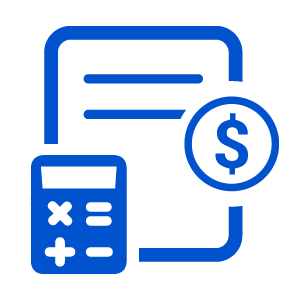











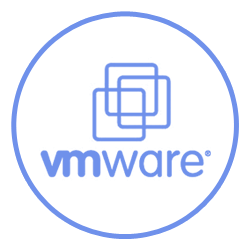









.png)



.png)

